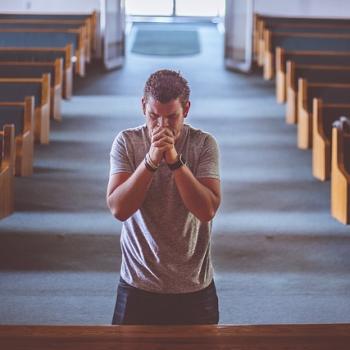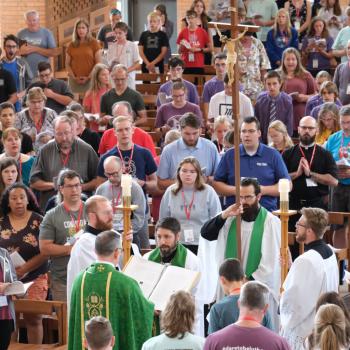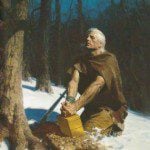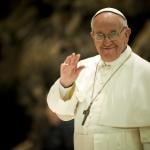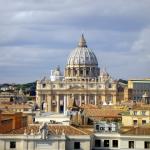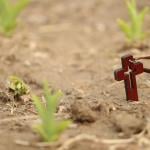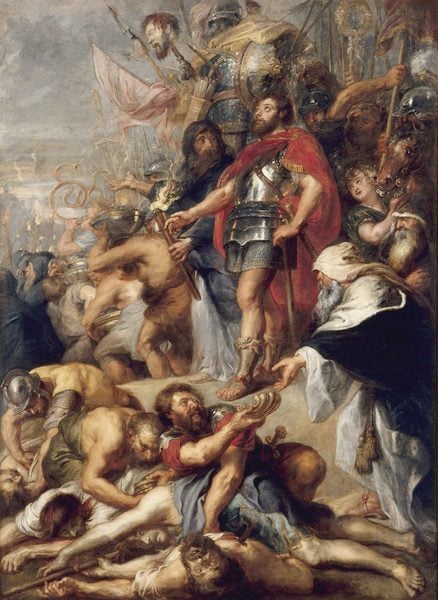
Wikimedia Commons public domain
Another installment from the initial draft of my forthcoming book:
In 175 B.C., aggressive Jewish reformers found an enthusiastic but dangerous ally in a new Seleucid monarch who called himself Antiochus Epiphanes. Antiochus believed in Hellenism, yes, but he also thought that Hellenism would provide him with higher tax revenues—revenues that he desperately needed in order to keep his many wars going. Casting his eyes around the empire for money, he found a promising source of untapped cash. The vast funds of the temple at Jerusalem were simply too much to pass up. Fortunately for him, the militant Hellenizers in Jerusalem, who were his natural allies, had gained control of the office of high priest. They had also published a decree recognizing the divinity of Olympian Zeus. Zeus was just another name for Jehovah, after all, and they couldn’t see that it was worth quibbling over names in this new age of cosmopolitan sophistication. More important still, from Antiochus’s perspective, the Hellenizers were busily downgrading what they saw as the absurd rituals of the temple. No use spending all that good money on sacrifices when you could divert it to really useful things like athletic competitions and drama festivals or, as their boss Antiochus chimed in, like military equipment and naval vessels. So he began to dip into the temple treasuries to further his international adventures, with the aid and connivance of Hellenizing Jews.
The outcry from the people was deafening. Perhaps even Antiochus could hear it, far away in his Syrian palace though he was. The Hellenizers were now revealed to be not only enemies of Jehovah but willing tools of a greedy, tax-happy foreign imperialist. There was tremendous popular resistance, and there were many martyrs. Open revolution broke out in the small town of Modin, located not far from the site of the modern Tel Aviv airport, when one of the “reformers,” an agent of the Hellenizing government, was killed by an aged priest named Matthias Hasmon. The old man’s five sons, led by Judah the Maccabee (“the Hammer”), perhaps knowing that they now had very little to lose, launched an astonishing guerrilla campaign that crushed the Hellenizers and won the Jews’ virtual independence. (However, in the course of their long and difficult campaign, the Hasmoneans, as the Maccabees were sometimes called, turned to a rising Italian city-state for help. A place called Rome. As can be imagined, this step would have important consequences down the road.) A priestly family, the Maccabees stood for strict allegiance to the Law. Their prestige after a successful rebellion against one of the world’s leading powers merely reinforced the tendency toward reverence for the Law, or the Torah, that had already begun to characterize Judaism since at least the days of Ezra and Nehemiah. It would mark Judaism ever afterwards.
As part of this return to the Law, a national education system began to evolve in which, theoretically, all Jewish boys were taught the Torah. This education was entirely religious, rejecting—for reasons that ought to be obvious—anything foreign or nonreligious. The Hellenizers had discredited themselves within Palestine by their alliance with a foreign tyrant, as well as by their willingness to abandon important aspects of the Jewish religion. The new form of education that arose upon their downfall had the benefit of avoiding the dangers of contact with corrupt foreign ideas and of strict focus upon scripture. As such, it had a great deal to do with the later rise of rabbinic Judaism. However, in trying to steer clear of ideas from outside, it tended to make Judaism narrow and xenophobic. This was an opposite but equally dangerous error.
John Hyrcanus, a grandson of Matthias Hasmon who reigned over the Jews from 134 to 104 B.C., maintained his line’s reputation for zeal by setting out to conquer the entire land of Palestine, which the Bible told him was rightfully his as ruler of the Jewish state. It was his duty to eliminate foreign religions and unorthodox sects and, if necessary, to slaughter those who hesitated to give them up. He massacred entire towns whose only crime, as far we can determine, was speaking Greek. He conquered the province of Idumea and forcibly converted the inhabitants of its chief cities to Judaism, butchering those who refused to convert. This was bad enough, but the Hasmonean dynasty, which had at least begun in an outburst of pious heroism, ultimately ended in impiety and oppression. The later members of the family, rich and corrupt, were a disgrace to their name. It’s from this time of deep disappointment in the nation’s leaders that we first hear of a faction known as the “Perushim,” the Pharisees, who rejected the royal religious establishment and emphasized personal righteousness as the way to salvation. In a sense, they represented a popular revolt against the aristocracy. The temple, the Pharisees were willing to admit, might well be corrupt, or at least administered by corrupt men, but it was still possible for each individual Jew, regardless of class, to live the laws of purity and to study the Torah within his own home. The Sadducees, on the other hand, represented the rich and were more closely affiliated with the ruling class.





